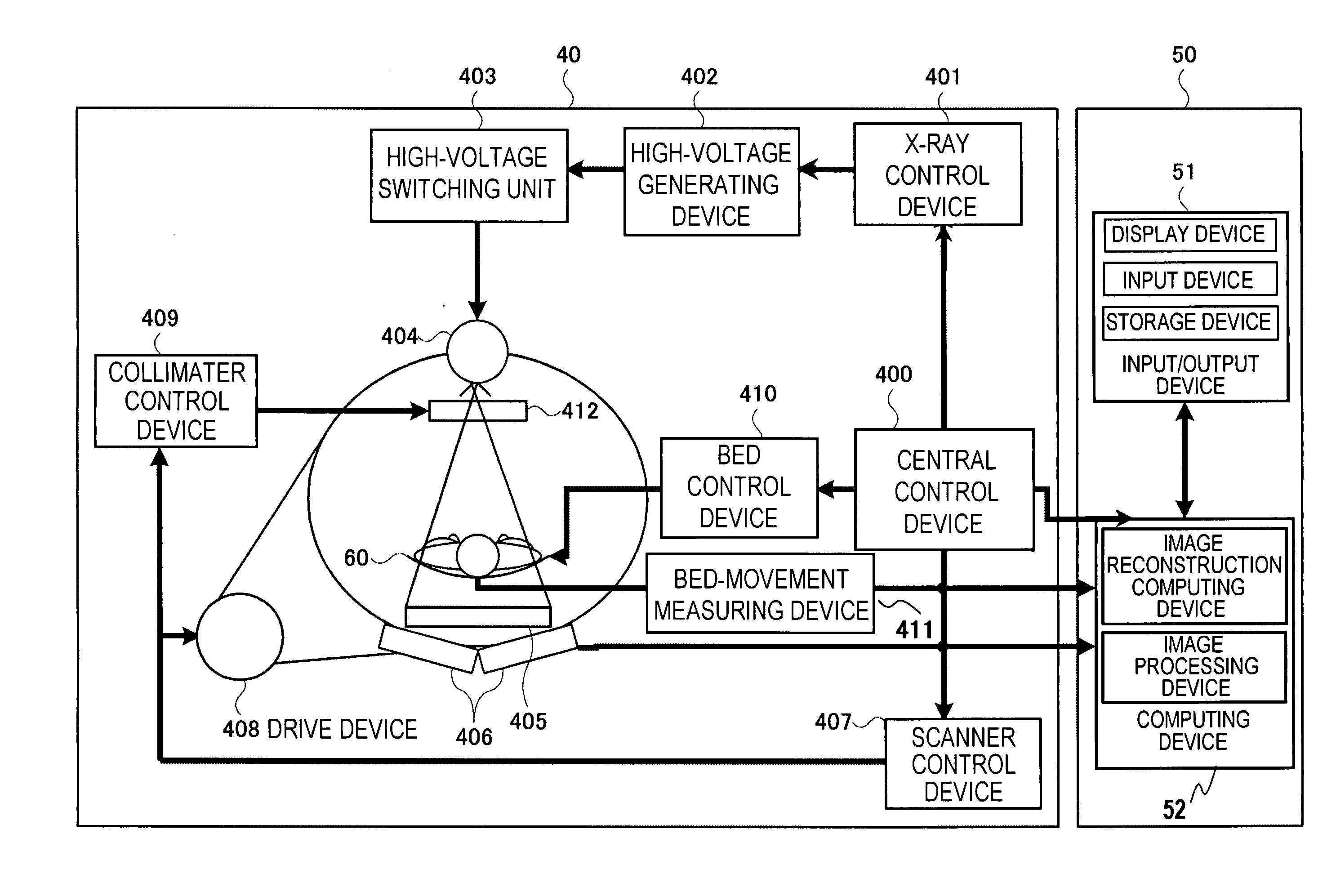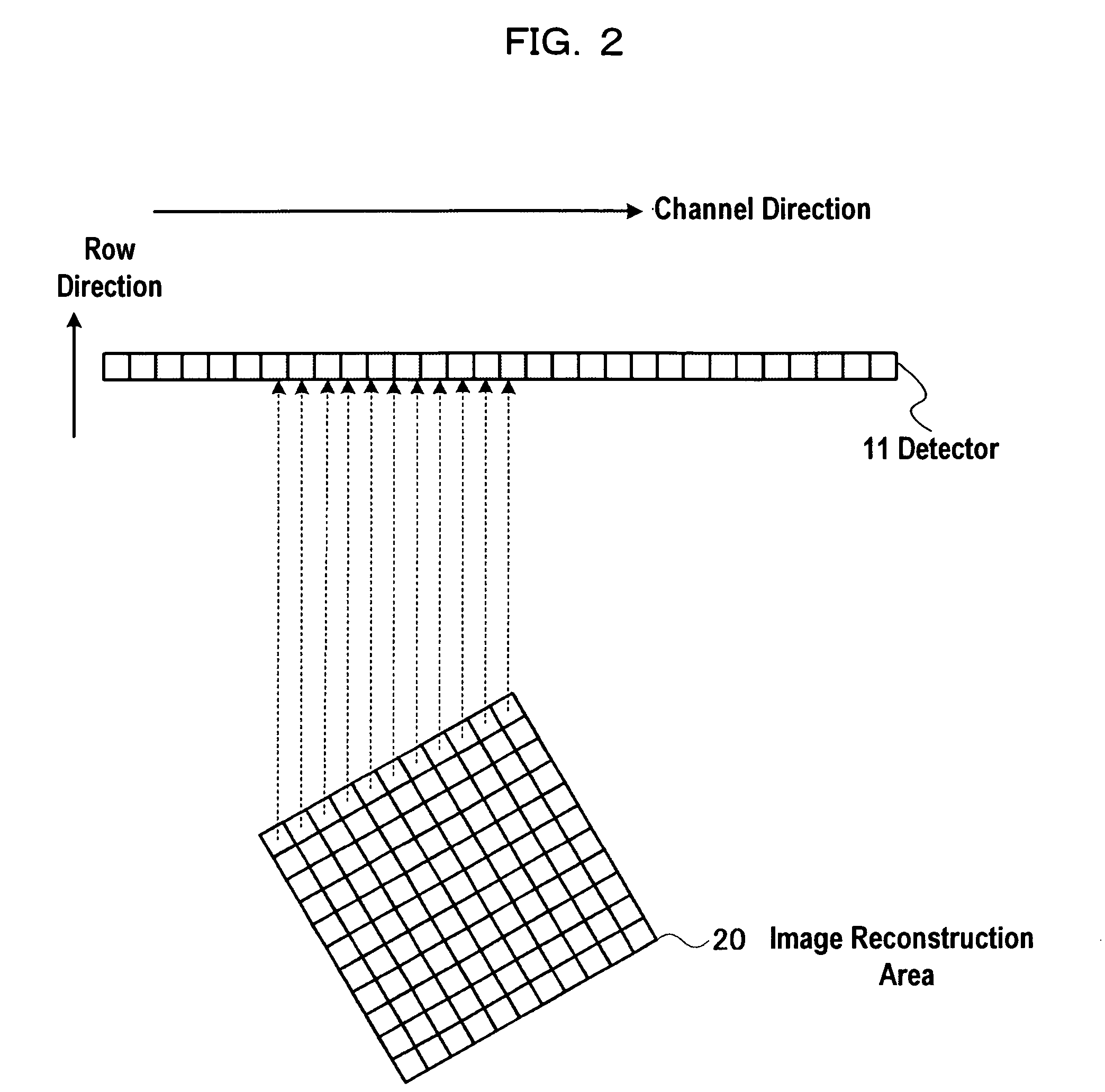Tomographic device and method therefor
a tomographic device and image reconstruction technology, applied in tomography, instruments, applications, etc., can solve the problems of reducing affecting the diagnostic accuracy of tomographic devices, and complicated image reconstruction methods therefor
- Summary
- Abstract
- Description
- Claims
- Application Information
AI Technical Summary
Benefits of technology
Problems solved by technology
Method used
Image
Examples
Embodiment Construction
[0029] Herein below, an embodiment of the tomographic device according to the present invention will be explained in detail with reference to the drawings accompanied. FIG. 4 is a diagram showing an entire constitution of an MDCT representing an embodiment of a tomographic device according to the present invention. A scan method of the MDCT is a rotate-rotate method (the third generation) and the MDCT, when roughly sectioned, is constituted by a scanner 40, an operation unit 50 and a bed 60 for moving a subject while setting the same thereon.
[0030] The scanner 40 is constituted such as by a central control device 400, an X-ray control device 401, a high voltage generating device 402, a high voltage switching unit 403, an X-ray generating device 404, an X-ray detector 405, a pre-amplifier 406, a scanner control device 407, a scanner drive device 408, a collimator control device 409, a bed control device 410 and a bed movement measuring device 411. The operation unit 50 is constitute...
PUM
 Login to view more
Login to view more Abstract
Description
Claims
Application Information
 Login to view more
Login to view more - R&D Engineer
- R&D Manager
- IP Professional
- Industry Leading Data Capabilities
- Powerful AI technology
- Patent DNA Extraction
Browse by: Latest US Patents, China's latest patents, Technical Efficacy Thesaurus, Application Domain, Technology Topic.
© 2024 PatSnap. All rights reserved.Legal|Privacy policy|Modern Slavery Act Transparency Statement|Sitemap



